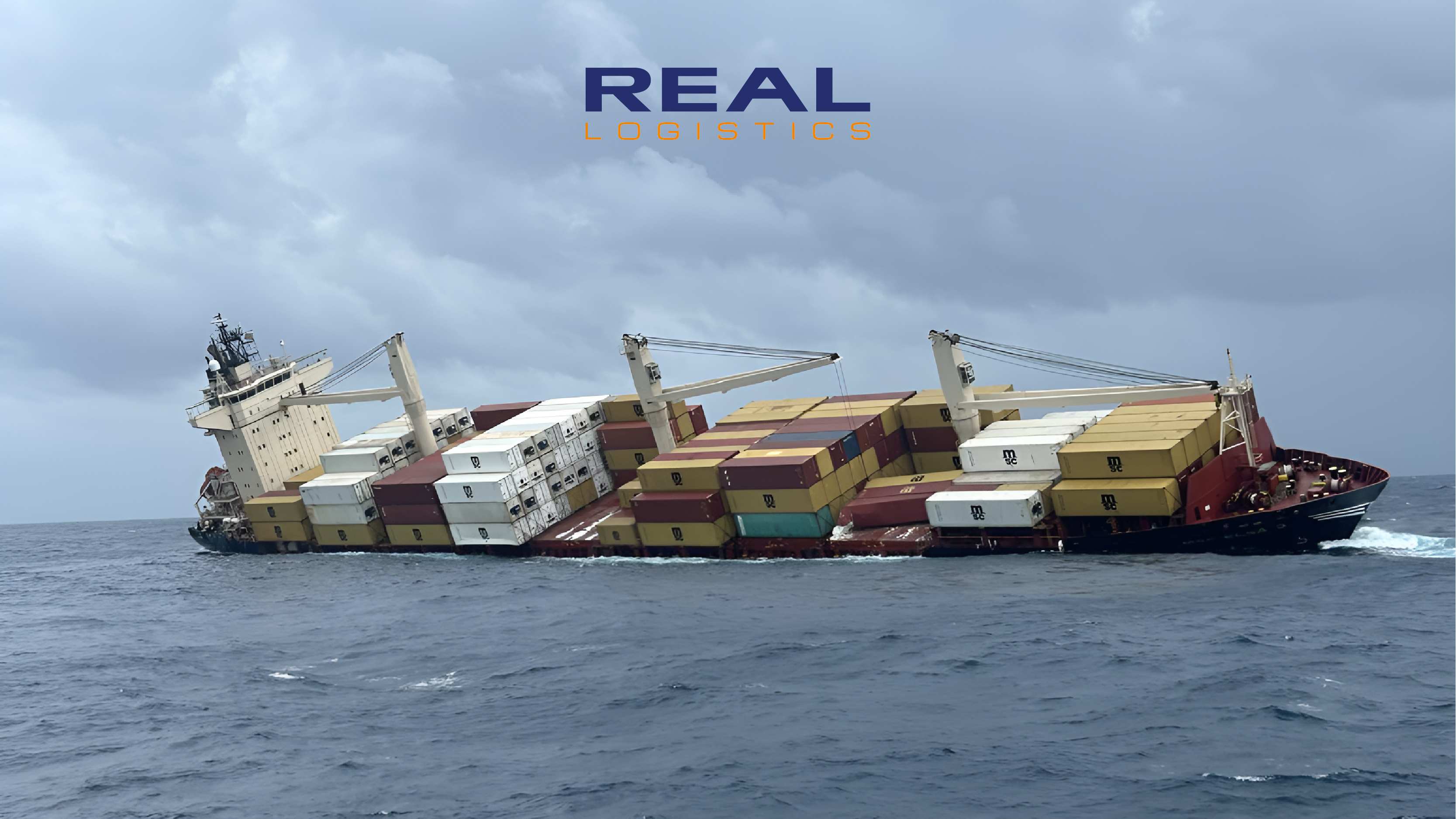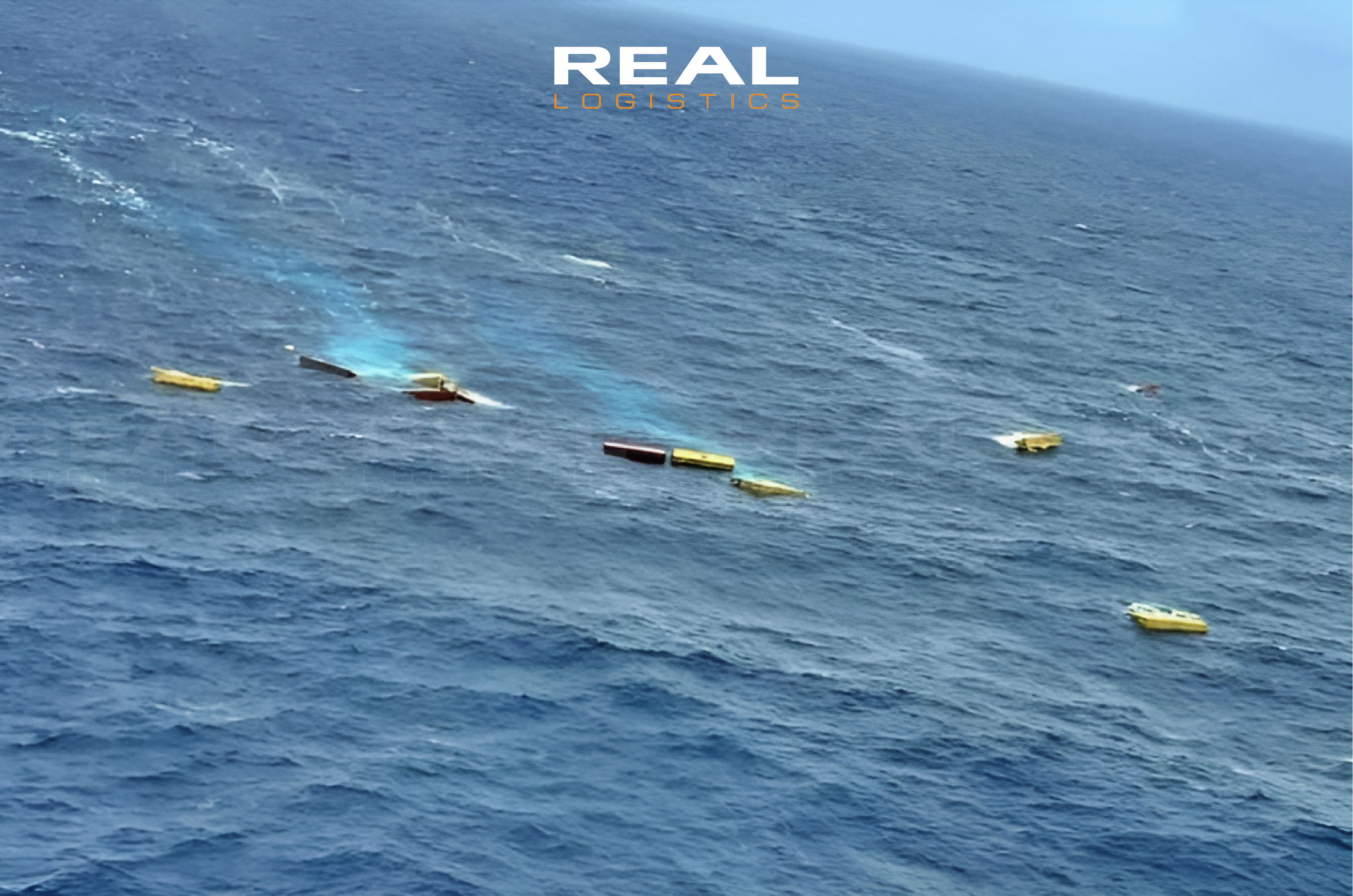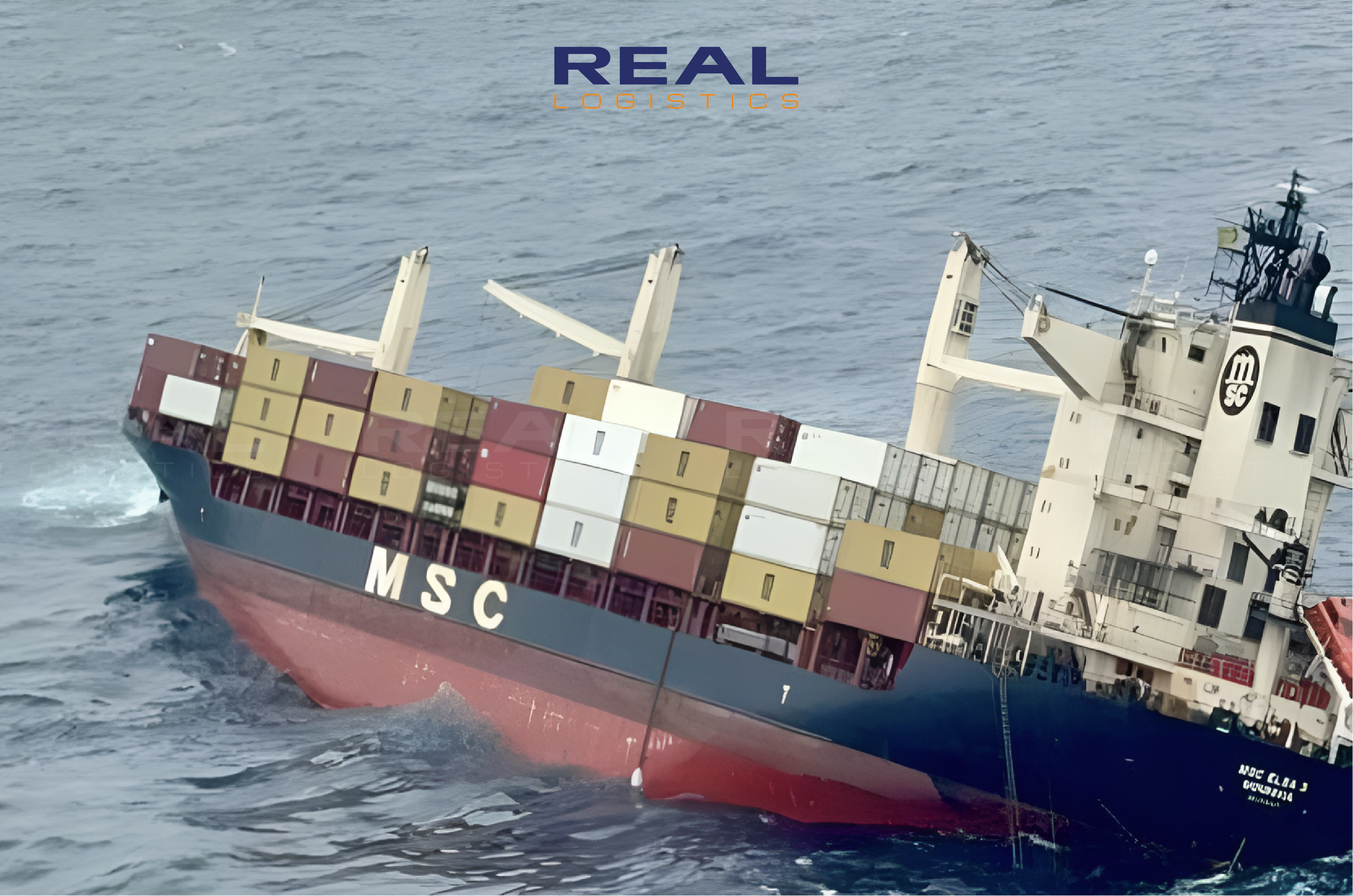Container Ship MSC Elsa 3 Capsizes and Sinks Off India: 640 Containers, Hazardous Chemicals Drifting Toward Kerala Coast
1. Accident Overview – Latest Updates
1.1. Time and Incident
On May 24, 2025, the container ship MSC ELSA 3, flying the Liberian flag and operated by Mediterranean Shipping Company (MSC), experienced a severe 26-degree list to port while en route from Vizhinjam Port to Kochi, India.
Preliminary investigations identified water ingress into one of the cargo holds as the cause, resulting in loss of stability. Despite calm sea and weather conditions, the vessel failed to regain balance.

1.2. Rescue Operations
Following the distress signal, the Indian Coast Guard quickly launched rescue operations, saving 21 out of 24 crew members.
Three senior officers — the captain, chief engineer, and second engineer — remained onboard to assist rescue efforts. However, early on May 25, the vessel capsized completely and sank, forcing their rescue by the Indian Navy ship INS Sujata. Thus, all 24 crew members were rescued by the Indian Navy and Coast Guard (Updated on the evening of May 25)
1.3. Cargo Status
At the time of the incident, MSC ELSA 3 was carrying 640 containers, including 13 containers with hazardous goods, of which 12 contained calcium carbide — a highly water-reactive substance.
Additionally, the ship carried 84.44 tons of diesel fuel and 367.1 tons of furnace oil, raising concerns about potential oil spills and marine pollution.
The Kerala state authorities have warned local residents to avoid contact with any floating debris or drifting containers.

2. Environmental and Maritime Safety Consequences
2.1. Serious Risks
The condition of hazardous cargo leaks remains unknown. Calcium carbide containers, if breached underwater, can cause explosive reactions.
Fuel oils (diesel and furnace oil) pose ecological risks to the sensitive coastal marine ecosystems.
2.2. Emergency Response
- Deployment of pollution control vessel ICGS Saksham.
- Aerial surveillance to detect oil slicks and floating debris.
- Activation of India’s National Oil Spill Disaster Contingency Plan (NOS-DCP).
- Public warnings to coastal communities to steer clear of floating debris and containers.

3. Cause Analysis and Lessons Learned
3.1. Static Instability Due to Improper Cargo Stowage
One key cause was likely improper cargo loading. Container ship operations mandate heavy cargo to be stowed low and lighter cargo above to keep the vessel’s center of gravity low, ensuring stability. Placing heavy cargo higher raises the center of gravity, reduces righting moments, and makes the ship prone to listing or capsizing.
3.2. Ineffective Ballast Management
Fuel and freshwater consumption during voyage reduces vessel weight. Failure to replenish ballast water to compensate causes imbalance and increases risk of listing. Inefficient ballast management likely contributed to MSC ELSA 3’s instability.
3.3. Vessel Age and Maintenance
MSC ELSA 3 is 28 years old. Although regularly inspected, aging can cause structural and system fatigue, raising incident risk if maintenance is inadequate.
3.4. Hazardous Cargo Management
Transporting hazardous goods like calcium carbide requires strict procedures in packaging, stowage, and handling. Any management lapses can have severe consequences, especially in incidents like vessel capsizing.
3.5. MSC’s Operational and Emergency Response
This incident highlights the importance of compliance and careful technical assessment, especially in high-risk waters and adverse weather. MSC’s professional evacuation coordination and retention of key crew showed strong emergency preparedness. Their swift, effective crisis communication with timely updates helped mitigate risks and protect corporate reputation. These aspects serve as valuable practical lessons for all logistics and maritime operators on risk management, operational caution, and incident response.

4. Conclusion
The sinking of MSC ELSA 3 serves as a strong reminder of the critical need to strictly adhere to maritime safety regulations and hazardous cargo management. Shipping companies must ensure proper cargo stowage, efficient ballast control, and regular vessel maintenance. Preventive and responsive measures are essential to reduce risks and safeguard the marine environment.
—————————————
Real Logistics Co.,Ltd
👉 Facebook: Real Logistics Co.,Ltd
☎️ Hotline: 028.3636.3888 | 0936.386.352
📩 Email: info@reallogistics.vn | han@reallogistics.vn
🏡 Address: 39 - 41 B4, An Loi Dong, Thu Duc, HCM City
51 Quan Nhan, Nhan Chinh, Thanh Xuan, Ha Noi City

